Timber, bamboo and related products must meet the import conditions published in our Biosecurity Import Conditions system (BICON).
We have categorised the common types of timber, bamboo and related products below. This information will help you to find the most appropriate BICON case for your goods. Please open BICON and search for the relevant BICON case term, as detailed below.
Composite products must meet the import conditions relevant to all components.
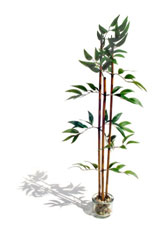
Common names
Artificial plants, artificial trees, faux plants
Import conditions
Refer to BICON case: Artificial plants on natural stems
Description/uses
Artificial foliage or flowers attached to a natural wood stem. The stem may be with or without bark.
Biosecurity risks
The bark on the natural stems can carry insects and plant diseases. Natural stems may also be from prohibited plant species like apple or elm trees. In some cases, seeds (including wheat) and pine cones are attached to the stems for decoration.
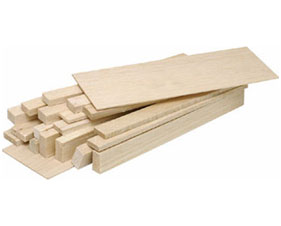
Common names
Corkwood, Balsa
Scientific name
Ochroma pyramidale
Import conditions
Refer to BICON case: Timber and timber products
Products constructed wholly from balsa wood or with balsa wood as the sole wooden component are listed in this case under the Table of Wooden Products.
Description/uses
Balsa wood is the finished product derived after kiln drying and milling wood from stems of Ochroma pyramidale. It is commonly used for insulation, life-rafts and model making.
Biosecurity risks
Balsa wood is a light, processed wood. Balsawood has lower biosecurity risks than other wooden products because its width is usually too thin for borer attacks.
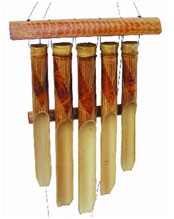
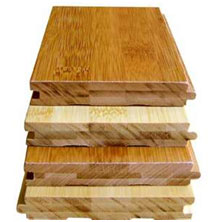
Common names
Dried bamboo, bamboo laminates, bamboo veneers
Scientific names
Bambusa spp., Dendrocalamus spp., Phyllostchys spp. and related genera
Import conditions
Refer to BICON case: Bamboo products
Description/uses
Bamboo articles include fencing, poles, handicrafts, sticks, chimes, chopsticks, baskets, skewers, and other articles that are wholly or partly made of bamboo. Bamboo must be dried and not capable of propagation.
Bamboo laminates include highly processed products made from bamboo that have undergone manufacturing processes including shredding or stripping of the bamboo, boiling or steaming, peeling/veneering, kiln drying, followed by moulding/pressing. These can include bamboo flooring, strand woven bamboo board and bamboo kitchenware.
Some highly processed bamboo products are considered to present a low biosecurity risk. Refer to Wooden or bamboo products.
Biosecurity risks
Bamboo articles, if not processed sufficiently, may contain boring insects, fungi, and other contaminants that have the potential to introduce exotic pests and diseases to Australia.
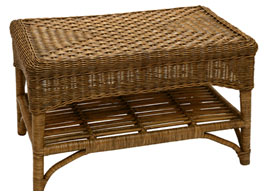
Common names
Cane and rattan products, cane and rattan furniture
Scientific name
Calamus spp. and related genera
Import conditions
Refer to BICON case: Cane and rattan articles
Description/uses
Cane and rattan products include cricket bat handles, furniture, kitchenware and mats, as well as bundles of prepared rattan.
Cane and rattan articles can often contain bamboo components. Bamboo must meet the conditions as stated in the BICON case Bamboo products.
Biosecurity Risks
Cane and rattan products are often manufactured in rural-based cottage industries that lack rigorous quality control mechanisms to address biosecurity concerns. Insects can be found in the stems. Bark presents a risk of carrying disease and spores.
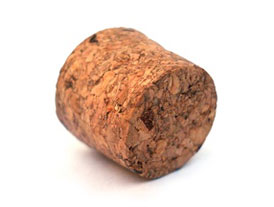
Common names
Cork, granulated cork, processed cork
Scientific name
Quercus suber
Import conditions
Refer to BICON case: Cork and cork products
Description/uses
Highly processed products made from the outer bark of the cork oak.
Biosecurity risks
There are minimal biosecurity risks with processed cork. Unprocessed cork and large cork products have the potential to become infested with insect pests.
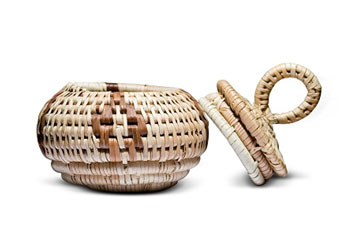
Common names
Wicker furniture, wicker baskets
Scientific name
Salix spp.
Import conditions
Refer to BICON case: Dried willow articles
For sawn Salix timber (timber from willow trees), please refer to the BICON case: Timber and timber products
Description/uses
Includes baskets, fencing, furniture and mats. Articles that also include other material such as wood, rattan, cane or bamboo must also comply with the import conditions for these components.
Biosecurity risks
As willow may contains bark, it presents a risk of carrying disease spores and the bark may mask the presence of insects feeding in the wood.
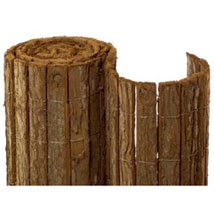

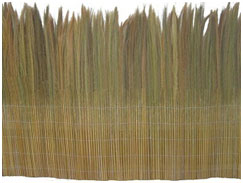
Common names
Thatching, fencing, screening, bark fencing, brushwood fencing, China fir, fireweed, burning bush, summer cypress, weeping baeckea, weeping coast myrtle, heather, ling.
Scientific name
Fencing and screening can be made from various plant material from different species, including:
- branches, with or without bark of Cunninghamia lanceolata (syn. Belis lanceolata and Pinus lanceolata), Calluna vulgaris, and Bassia scoparia (syn. Kochia scoparia)
- shrubs of Baeckea frutescens (Myrtaceae family)
- ferns of Coniogramme spp., Dicranopteris spp., Gleichenia spp., Pteridium spp., and Pteris spp.
Import conditions
Refer to BICON case: Fencing, screening material and blinds derived from plants
Description/uses
Parts of shrubs, trees, branches, and bark used to make fencing and screening.
Biosecurity risks
Consignments of dried plant material can contain bark and viable seeds that may be prohibited, restricted or diseased. Dried plant material may also be infested with insects, contaminated with soil, or carry fungal spores of biosecurity concern to Australia.
Importation of Myrtaceous timber into Australia poses a risk of introducing exotic pests and diseases, including guava rust or myrtle rust.
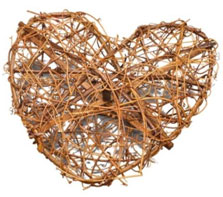
Common names
Grape vine products and decorations
Scientific name
Vitis spp.
Import conditions
Refer to BICON case: Grape vine articles
Description/uses
Articles made from the vines of Vitis spp. include Christmas decorations, baskets and other ornaments.
Biosecurity risks
Grape vine may carry exotic plant diseases or insects. The vine may be propagatable, which increases the risk of entry, spread and establishment of biosecurity risks.
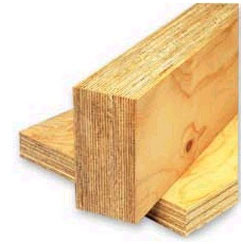
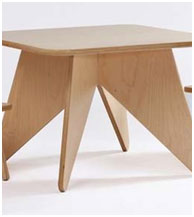
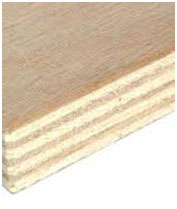
Common names
Plywood, ply products, ply sheeting, Laminated Veneer Lumber (LVL)
Import conditions
Refer to BICON case: Timber and timber products
Products consisting wholly of plywood or LVL are listed in this case under the Table of Wooden Products.
For timber and timber products imported as Break-bulk from New Zealand during the burnt pine longicorn beetle (Arhopalus ferus) flight season, please refer to the BICON case: Timber and timber products imported from New Zealand during Burnt Pine Longicorn (BPL) flight season.
Description/uses
Articles made solely from plywood, veneer or a combination of plywood, veneer and reconstituted wood.
Plywood sheets are typically made from veneers no more than 5mm thick. Complete sheets are usually no more than 35mm thick (6-7 veneers bonded together) and includes I-beams, I-joists and flat-pack modular homes.
LVL is an assembly of thin timber veneers laminated with adhesive, where the grain direction of the outer veneers and most of the other veneers are in the longitudinal direction. LVL is often fabricated as beams.
Products containing solid wood components must be imported as a wooden manufactured article.
Biosecurity risks
The manufacturing process of laminated timber products and articles manages some biosecurity risk. However, plywood and LVL can attract timber pests when stored in an environment that favours them. Plywood and substrates used for veneers have the capacity to absorb moisture and this may encourage infestation by pests.
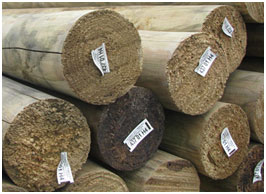
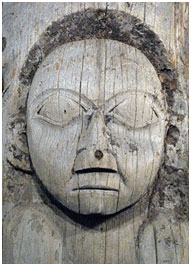
Common names
Logs, poles, raw lumber
Import Conditions
Refer to BICON case: Logs, log cabins and oversize timber
For logs, log cabins and oversize timber imported from New Zealand during the burnt pine longicorn beetle (Arhopalus ferus) flight season, please refer to the BICON case: Timber and timber products imported from New Zealand during Burnt Pine Longicorn (BPL) flight season.
Description/uses
Refers to any oversize timber. which is timber that exceeds 200mm in all dimensions or where any internal points of the timber exceed 100mm from any surface of the timber.
Products can require further processing onshore or may be imported as a final product, such as log cabins, statues, totem poles and oversize furniture.
For timber that does not exceed 200mm in all dimensions, please refer to the BICON case: Timber and timber products.
Timber of the species Cocos nucifera exceeding 200 mm in all dimensions is prohibited entry into Australia.
Biosecurity risks
Timber that has undergone minimal processing presents an increased risk of infestation with insects and snails, contamination with soil, bark, seeds, plant material and animal residues.
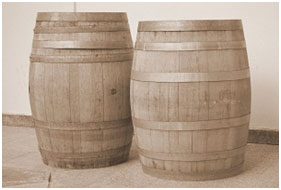
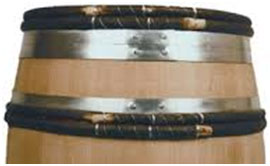
Common names
Wine barrels, casks, barrels, staves, tanks and vats made from oak, chestnut hoops, chestnut rings
Scientific name
Quercus spp. (oak), Castanea spp. (chestnut)
Import conditions
Refer to BICON case: Oak barrels and chestnut bark hoops
For barrels used in alcohol production which do not contain chestnut bark hoops, please refer to the BICON case: Timber and timber products. These barrels are listed in this case under the Table of Wooden Products.
For barrels used as homewares including garden ornaments, please refer to the BICON case: Timber and timber products. Barrels for this end use are considered wooden manufactured articles.
Description/uses
Oak barrels are used in alcohol production. Chestnut hoops are decorative wooden hoops on wine barrels. Wine producers wrap the hoops around oak barrels to minimise physical damage, as a support or decoration.
Biosecurity risks
The manufacturing processes combined with the end use of alcohol production make oak barrels a low-risk commodity. However, wine barrels can become infested with insect pests such as borers.
Chestnut articles may host Chestnut Blight, a serious disease of chestnuts that presents a significant biosecurity concern. The disease has devastated chestnut forests in North America and Europe.
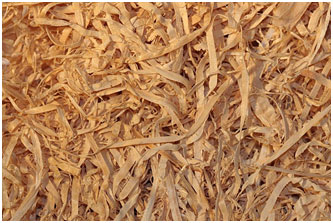
Common names
Packaging, packing materials
Import conditions
Refer to BICON case: Packing materials and packaging of plants
Description/uses
It is preferred that nursery stock plants are imported bare rooted. Packing materials can be used as packaging around nursery stock to reduce the risk of damage during transit.
Packing materials may include buckwheat hulls, cardboard, charcoal, paper, cork, peat moss and sawdust amongst others. This is material forming part of the goods and should not be considered as general use non-commodity packaging used to support goods in international trade.
Read more about:
- other types of timber and bamboo packaging
- preparing for import and the requirements for non-commodity packaging.
Biosecurity risks
Packaging materials such as straw, hay and wood shavings can present a very serious biosecurity risk. These materials may contain insects, soil, viable weed and cereal seeds, plant and animal diseases, and other contaminants.
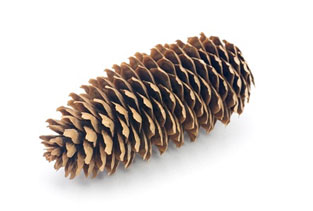
Common name
Pine cones
Scientific name
Pinus spp. and related genera
Import Conditions
Refer to BICON case: Pine cones
Description/uses
The conical or rounded woody fruit of coniferous trees, with scales that open to release the seeds. Pine cones are mainly used in Christmas decorations and floral displays.
Biosecurity risks
There is the risk of pine cones introducing animal diseases, plant diseases, insect pests, and viable prohibited and restricted plant seeds.
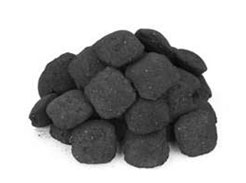
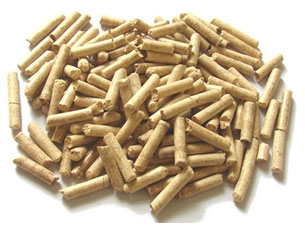
Common names
Charcoal, coal, wood pellets, fuel wood
Import conditions
Refer to BICON case: Plant derived charcoal, wood pellets, briquettes and firewood
Description/uses
Charcoal includes timber or other plant residues that have been fully carbonised at high temperatures under low oxygen conditions. Fully carbonised charcoal includes carbonised briquettes and pellets made from compressed wood, charcoal, lump wood charcoal (which is fully carbonised timber, coconut shell, bamboo or any plant derived origin), extruded charcoal and heat beads.
Wood pellets and briquettes are products made by extruding and pressing sawdust, wood powder or charcoal and pelletising into pellets, agglomerated logs, or briquettes.
Biosecurity risks
Charcoal that is not fully carbonised may contain bark and other biosecurity risk material such as insects of concern. Wood or agricultural waste that has undergone carbonisation or high-level processing (heating, pressing or pelletising under pressure) poses minimal biosecurity risk when effectively stored and packaged to further reduce any contaminants such as insects.
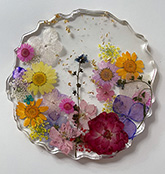
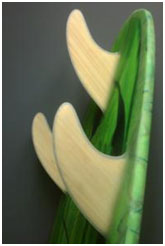
Common name
Plant materials embedded in plastic or epoxy resin such as resin-encased flowers in artworks, displays, bookmarks or coasters, surfboards with wooden cores, fins or stringers
Import conditions
Refer to BICON case: Plant materials embedded in a solid medium
Description/uses
Includes timber and bamboo articles that have been fully embedded in hard silicone, glass, fibreglass, catalysed hard plastics or similar compounds using heat, moulding or chemical processes. Embedded materials must be completely impervious to air or liquids and incapable of movement within the medium.
Biosecurity risks
Embedded plant materials pose a low biosecurity risk due to their manufacturing processes.
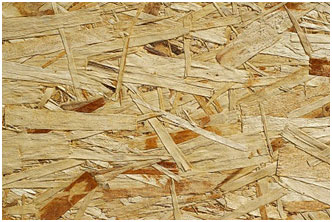
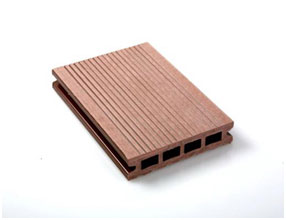
Common names
Plastic wood, chipboard, particle board, fibreboard, medium density fibreboard (MDF), high-density fibreboard (HDF), oriented strand board (OSB), chipboard, particleboard, laminated strand lumber (LSL)
Import conditions
Refer to BICON case: Timber and timber products
Reconstituted wood or wood plastic composite products containing no solid timber components is listed in the Table of Wooden Products.
Description/uses
Products made with wood fibre, plant flour or wood granules (pallwood), containing a minimum of 30 per cent resin, polyethylene, polystyrene, polyvinyl chloride or similar. They have no recognisable signs of the raw plant materials used in their manufacture, and have blending, thermal mixing and extrusion steps incorporated into their manufacturing process.
Products made from a combination of reconstituted wood and wood veneer where the veneer is no more than 5mm thick. Includes chipboard, hardboard, medium- and high-density fibre board (MDF), oriented strand board (OSB), particle board, and masonite.
Products containing solid wood components do not fall within the Table of Wooden Products and must be imported as a wooden manufactured article.
Biosecurity risks
Due to the manufacturing processes, reconstituted wood or wood plastic composite products containing no solid timber components pose minimal biosecurity risks.
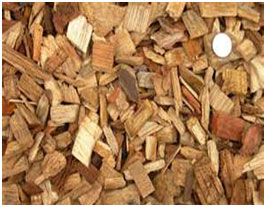
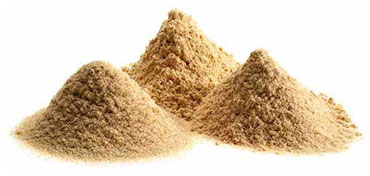
Common names
Sawdust, woodchips, wood cellulose, wood flour, wood shavings, wood fibre, wood wool
Import conditions
Refer to BICON case: Sawdust and woodchips
Description/uses
Includes sawdust, wood fibre, shavings, chunks, and chips, wood flour and powder, items containing sawdust such as animal beddings, door snakes or stuffed toys, pieces of wood used in wine making (excluding staves, headboards and barrels), pieces of wood used in aquariums and terrariums, and any other timber by-products.
For products which have been processed further into wood pellets, briquettes or charcoal, please refer to Plant derived charcoal, wood pellets, briquettes and firewood.
Biosecurity risks
High biosecurity risks are associated with sawdust products such as soil, other plant materials, animal residues or insect concerns that have been mixed or packed with the commodity. Wood chips, chunks or bits constitute the highest risk because they have undergone minimal processing.
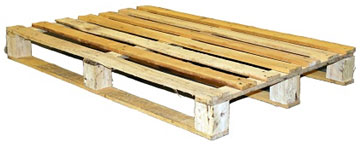
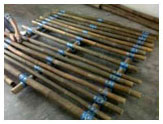
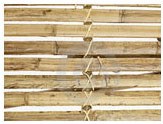
Common names
Pallets, crates, dunnage
Import Conditions
Refer to BICON case: Timber and bamboo packaging
Description/uses
Refers to timber and bamboo packaging and dunnage imported as a commodity and subsequently used as packing material in Australia, including to export goods from Australia. Includes cases, crates, pallets, packaging made from plywood and veneer, bearers and blocks. This does not include decorative boxes or similar that are imported with a commodity and remain with that commodity when sold.
This BICON case does not apply to general use non-commodity packaging used to support goods in international trade.
Read more about:
- preparing for import and the requirements for non-commodity packaging
- the types of non-commodity timber and bamboo packaging
Biosecurity risks
Timber and bamboo packaging and dunnage pose a high risk of introducing timber insects and plant pathogens into Australia. It is often made from lower quality timber that is not suitable for other commercial uses. Timber can have a high component of sapwood which is especially attractive to a wide range of timber pests.
Packaging containing solid timber must be treated with an approved treatment to mitigate biosecurity risk, for which certification in compliance with ISPM 15 is preferred. For further information, refer to the ISPM 15: The international standard for solid wood packaging material webpage.
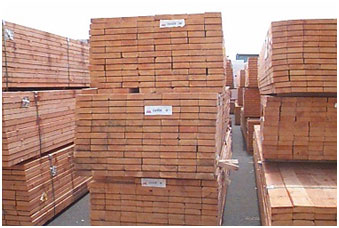
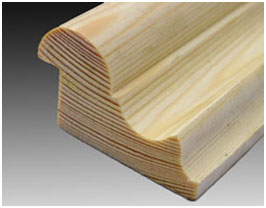
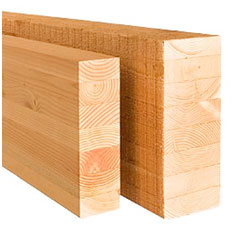
Common name
Sawn timber, roundwood, glulam, cross-laminated timber
Import conditions
Refer to BICON case: Timber and timber products
For timber and timber products imported from New Zealand during the burnt pine longicorn beetle (Arhopalus ferus) flight season, please refer to the BICON case: Timber and timber products imported from New Zealand during Burnt Pine Longicorn (BPL) flight season.
Description/uses
Unfinished sawn timber that will be cut, modified or further worked in Australia e.g. in building and construction applications. Includes timber that is:
- rough sawn into a desired size
- machined into a desired shape and dressed (smooth surface) but is not finished (lacquered or painted) e.g. solid timber decking, flooring, glue laminated timber (glulam) and roof eaves.
Timber and timber products must have at least one dimension or a diameter that is less than 200mm. All internal points of the timber must be no greater than 100mm from the surface.
For timber that exceeds 200mm in all dimensions, or internal points exceed 100mm in depth, please refer to Logs, log cabins and oversize timber.
Biosecurity risks
Sawn timber, roundwood and timber mouldings can become contaminated with mould, fungi, insects and other timber pests through storage on construction and building sites, shipping containers, and other environments. These products have the capacity to absorb moisture, and this may encourage infestation by pests.
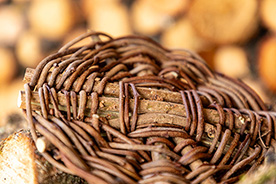
Common names
Wisteria products, woven baskets
Scientific name
Wisteria spp.
Import conditions
Refer to BICON case: Wisteria articles
Description/uses
Articles that are wholly or partly made of wisteria, including baskets that are covered by wisteria binding and bundles of prepared wisteria.
Biosecurity risks
These products are often manufactured in rural-based cottage industries that lack rigorous quality control mechanisms to address biosecurity concerns. Insects can be found in the stems. Bark has a risk of carrying disease and spores.
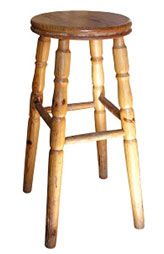
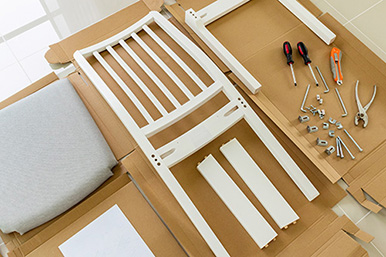
Common names
Wooden products in their finished state, furniture, retail-ready flat packs
Import conditions
Refer to BICON case: Timber and timber products
Description/uses
Wooden articles are a finished product and are often lacquered, varnished or painted. Includes products that are new or antique, made from solid wood, or a combination of solid wood and plywood or veneer, plastic, glass or metal. This also includes items made by hand from wood, such as art, instruments, and any finished wooden items not listed in the Table of wooden products.
For wooden products containing bark (including furniture, vases, bowls, picture frames, chopping boards and musical instruments), please refer to Wooden manufactured articles containing bark.
Biosecurity risks
Due to their manufacturing, these products are considered low risk. However, they may still contain timber borers, insect pests, bark and other contaminants.
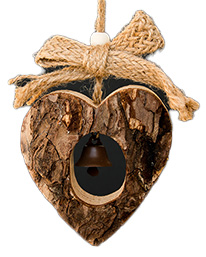
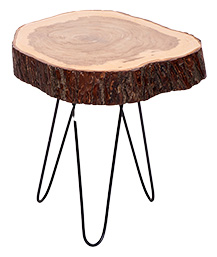
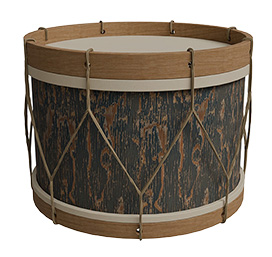
Common names
Art, décor and musical instruments featuring bark, furniture containing bark
Import conditions
Refer to BICON case: Wooden manufactured articles containing bark
Description/uses
Bark is the rough outer protective layer of stems and roots of woody plants such as trees, woody vines and shrubs. Bark is distinct and separable from processed timber.
Wooden articles where bark is a feature of the end product may include furniture, vases, bowls, picture frames, chopping boards and musical instruments.
Biosecurity risks
Bark poses a biosecurity risk to Australia as it creates a pathway for unwanted pests and diseases. Bark may mask the presence of insects feeding in the wood, plant pathogens, and other biosecurity risks from the environment in its structure such as spores and seeds within its cracks and crevices.
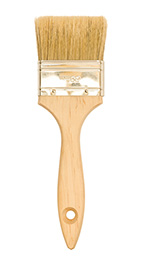
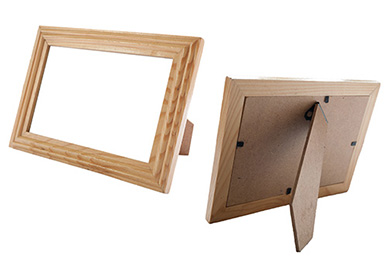
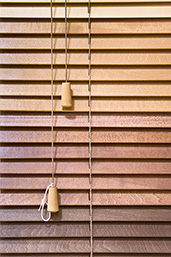
Common names
Highly processed wooden or bamboo products, including art and décor, venetian blinds and shutters small household goods, toys and craft supplies, weapons, tool handles, and sticks used in perfume diffusers
Import conditions
For timber products, refer to BICON cases: Timber and timber products
For bamboo products, refer to BICON cases: Bamboo products
Description/uses
Refers only to items outlined in the Table of Wooden Products and Table of Bamboo Products in their respective BICON cases. These products have undergone high levels of manufacture to mitigate biosecurity risk.
These tables exclude products containing bark, unfinished timber, and all other wooden or bamboo products not listed in their respective tables.
Biosecurity risks
Items listed in the Table of Wooden Products and Table of Bamboo Products have been assessed based on:
- processing and manufacturing techniques
- end use
- historical import data and trends
- common arrival modes and import volumes.
These factors, independently or in combination, have been determined to adequately reduce biosecurity risk to an acceptable level.
Further information
Read more about:
